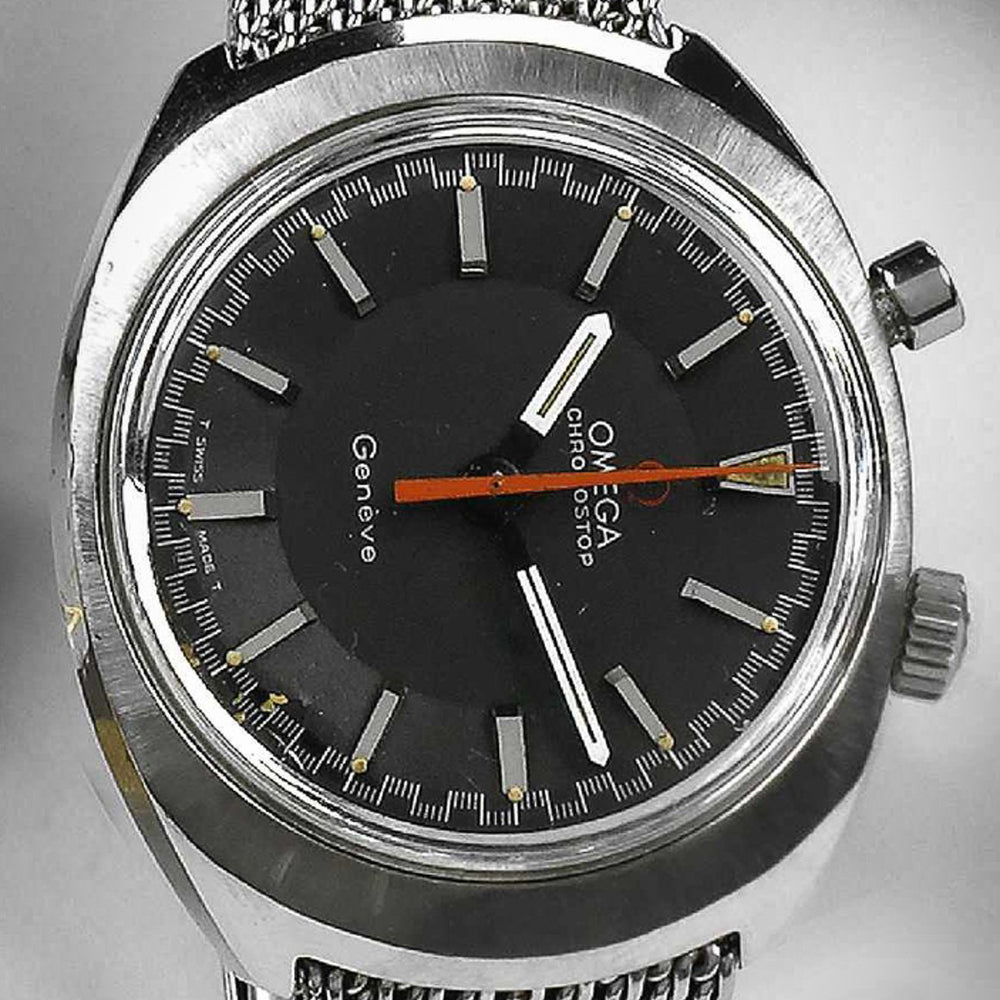There was another watch produced by Omega with drivers in mind, that surely wasn’t about to be taken to the moon. The watch I speak of is, of course, the quirky and still relatively affordable Omega Chronostop.


The Chronostop was a rather curiously complicated watch manufactured by Omega from 1966 to 1974, in two main lines. Firstly, there were the Chronostops that were sold under the Seamaster name, that were cased in larger, more complex stainless steel cases, with vibrant, multi-coloured dials. These were followed by the slightly smaller Chronostops that Omega simply signed with word ‘Geneve’ on the dial, signifying their place of origin. While the variants of the watch within the two lines might look different upon first glance, it’s important to note that under the hood, they both made use of the same movements—Omega’s manually-wound Cal. 865, and Cal. 920.
Essentially, the Chronostop was a standard time-telling wristwatch, fitted with a unique time tracking complication that was engaged like a regular monopusher chronograph, but without any subdials to indicate the amount of time elapsed. Despite the reduced functionality that came as a result of the absence of subdials, the Chronostop was especially appealing for individuals needing to time short instances quickly in succession. In the two different calibers, the same functions are present, save for one function that is only seen in the Cal. 920 of 1968, the date.


Of all the different variants of the Chronostop that Omega offered over the years, there is one that we feel is a cut above the rest, for obvious reasons: the Driver.
Unlike its conventionally configured cousins, the Driver featured a dial that was fitted horizontally within the case, and was meant to be worn on theunderside of your wrist, for easy access. The thinking here was that if you were to be speeding around the track, you could easily read the time without removing your glove-clad hands from the wheel of your car. Apart from that, the Driver and the standard examples were just about identical, making the subtle differences of this obscure spinoff of the Chronostop all the more intriguing.
All in all, the Chronostop Driver represents an interesting and largely experimental time in Omega’s past, where watches were relied upon heavily as professional tools, and not just as luxury items. As mentioned earlier, it could also be said that the Chronostop is still somewhat economical, and in a market where once worthless watches are beginning to skyrocket with the passing of each and every day, it’s always nice to find a timepiece of substance at a relatively accessible price.



Image sources: fellows.co.uk, christies.com, old-omegas.com, hodinkee.com




















































